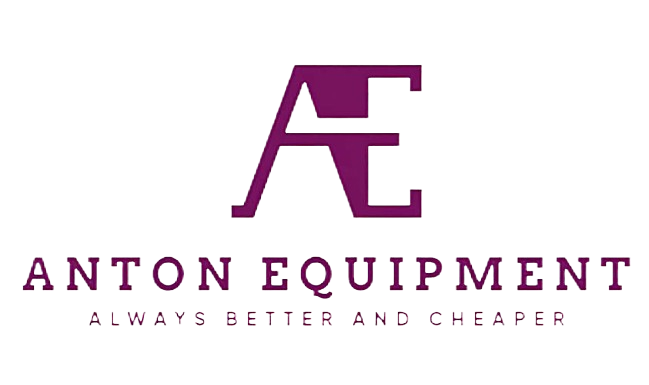News
Quick Couplers for Heavy Machinery: Streamlining Attachment Swaps in Commercial Construction Fleets
Types of Quick Couplers for Heavy Machinery
Hydraulic Quick Couplers
Quick couplers for hydraulic systems have become essential parts of today's heavy machinery setups, making it easy to connect fluids between machines and various attachments which boosts how efficiently work gets done on site. Most modern couplers come with built-in auto mechanisms that let workers make connections fast and with just one hand, cutting down both time spent and number of people needed when swapping out attachments. On construction sites specifically, these devices save tons of time because operators can flip between different tools without having to manually disconnect everything each time, so projects don't sit idle waiting for setup changes. Another big plus is that they can take on serious pressure loads, which means fewer leaks and breakdowns during operation something every site manager appreciates after a long day watching equipment fail.
Manual Pin Grabbers
Manual pin grabbers work well across different attachment needs since they connect via pins that get inserted by hand. Sure, these models take more elbow grease than the hydraulic versions out there, but folks who need something dependable for tough jobs tend to stick with manual grabbers. They just plain hold up better when it comes to keeping attachments secure during demanding tasks. The old school method gives operators peace of mind knowing their connections won't fail mid-job, even when switching between all sorts of attachments. While nobody loves the extra physical work involved, most construction sites still rely on these grabbers because they last longer and save money over time. Their solid build quality means they keep working day after day without breaking down, which is why so many crews continue using them despite newer alternatives being available.
Quick Connect Coupler Systems
Quick connect coupler systems make switching attachments fast and easy because of their clever locking designs that actually last longer since they don't wear out the parts so quickly. When machines spend less time sitting idle waiting for attachments to change, whole construction sites run better. No more fumbling around with wrenches or special tools needed to swap attachments means workers can get things done faster without breaking stride. For contractors racing against deadlines on tight schedules, this kind of system saves hours every week. That's why many equipment operators swear by these couplers when trying to keep productivity high while making sure all the machinery stays busy throughout the day.
Key Benefits of Quick Couplers in Commercial Construction Fleets
Reduced Downtime During Attachment Swaps
Quick couplers really cut down on downtime when switching attachments, something that makes a big difference for commercial construction crews. According to various industry reports, these devices can slash equipment downtime by around half. For construction companies racing against tight deadlines, this kind of time savings means they can keep projects moving forward without unnecessary delays. When operators can swap out tools quickly, machines stay productive throughout the day instead of sitting idle while adjustments are made. This translates into better workflow coordination across sites and ultimately keeps project timelines on track despite unexpected challenges.
Enhanced Safety for Operators
Quick couplers offer real advantages when it comes to keeping workers safe on site. They let operators connect equipment without getting too close to dangerous areas, which cuts down their time spent in risky situations. Look at construction sites that actually use these things - the numbers tell the story. Accident reports drop明显 after implementation, making them pretty much indispensable for anyone serious about workplace safety. The best part? Workers don't have to wrestle with those heavy attachments anymore. No more straining muscles trying to attach big machinery manually, which means fewer injuries from old school methods that just aren't worth the risk anymore.
Cost-Efficiency Through Versatile Attachment Use
Quick couplers offer real money saving benefits for construction companies running fleets of equipment. Instead of needing separate machines for every job, these connectors let operators switch between different tools quickly. Think about it this way: one excavator can handle digging, grading, and material handling just by swapping out attachments. This kind of flexibility cuts down on equipment purchases since contractors don't have to buy specialized gear for each task. Many businesses report saving thousands annually simply by maximizing what they already own. The ability to adapt on site means fewer idle hours for machinery and better return on investment overall. For small to mid-sized contractors especially, these savings make all the difference when competing against bigger firms with deeper pockets.
Selecting the Right Quick Coupler System
Compatibility with Skid Steer Attachments
Getting the right quick coupler system to work with skid steer attachments makes all the difference when it comes to smooth operations around the job site. The truth is, skid steer attachments come in so many different shapes and sizes that finding the correct match isn't always straightforward. Most equipment makers actually include helpful compatibility charts these days, something worth checking before making any purchases. These guides really do help avoid those frustrating situations where incompatible parts end up wasting time and money. When operators take advantage of manufacturer resources, they not only get better performance from their machines but also extend how long everything lasts. After all, nobody wants to deal with constant breakdowns or premature replacement costs because of mismatched components.
Matching Load Capacity to Fleet Needs
Load capacity stands out as one of the key considerations when selecting a quick coupler for heavy duty applications. The right coupler needs to handle whatever stress comes from daily operations across the entire fleet, otherwise there will be problems down the road with damaged components and reduced productivity. Operators should take time to look at what their most commonly attached tools require in terms of weight limits. When someone actually sits down and checks these numbers against real world usage scenarios, they'll find the sweet spot where the coupler isn't just adequate but truly matches what's needed day after day. This kind of matching between component specs and actual workload requirements makes all the difference in keeping machines running smoothly without unexpected breakdowns caused by overworked parts.
Hydraulic vs. Manual: Choosing for Frequency of Use
The decision between hydraulic and manual quick couplers really comes down to how often attachments get changed during daily work. In settings where equipment needs switching out multiple times per day, hydraulic models definitely shine. Operators can switch attachments quickly right from inside their cabs, cutting down on downtime and physical strain. On the flip side, manual couplers known in the field as pin grabbers tend to make more financial sense for operations that don't need constant swapping. Sure they take some elbow grease each time, but for businesses making maybe one or two changes a week, the initial investment saves money over time compared to the higher priced hydraulic alternatives.
Best Practices for Fleet Maintenance & Safety
Implementing Locking Mechanism Protocols
Having clear rules about how to lock those quick couplers is really important for keeping things safe when working around them. Without proper locks, there's always the chance something might pop off unexpectedly. We've seen cases where disconnected parts caused thousands in repairs and even hurt workers nearby. Training staff regularly on these safety measures matters just as much. People forget details over time or get complacent after months of routine work. When everyone knows exactly what to do with those locking mechanisms, accidents drop dramatically. Companies that spend time enforcing these policies see fewer breakdowns too. Equipment lasts longer when handled correctly from day one instead of being misused because someone didn't know better.
Routine Inspection Schedules for Quick Couplers
Setting up regular check-ups for quick couplers helps keep them working properly over time. Most industry experts recommend looking at these components frequently so any signs of wear get caught early on. This prevents sudden breakdowns and actually extends how long both the couplers themselves and whatever they're attached to will last. When doing inspections, focus especially on the locking parts where most problems tend to start, plus look out for any cracks or fluid leaks around those areas. Sticking with a set inspection timeline means equipment stays reliable day after day without surprises. Equipment downtime costs money, so catching small issues before they turn into big headaches saves companies thousands in repairs down the road.
Training Operators on Attachment Swap Safety
Getting operators trained properly on how to swap attachments safely really matters when it comes to avoiding injuries and keeping equipment from getting damaged. We run through simulations and actual hands on workshops where they practice these techniques repeatedly until they become second nature. People learn better when they actually do things rather than just reading about them. Regular refresher courses keep everyone sharp so they know exactly what to do when faced with unexpected problems while changing attachments. Investing time upfront in this kind of training pays off big time down the road. The workers stay safe, machines last longer without breakdowns, and overall operations run smoother because nobody gets caught off guard by something preventable.

